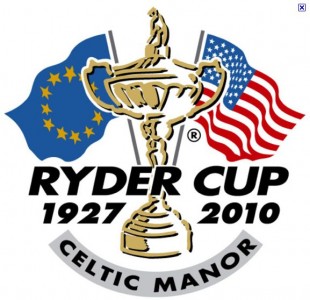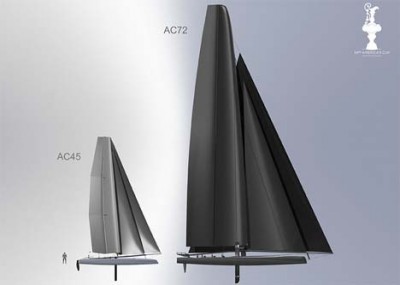 Coming Friday the Ryder Cup 2010 will finally start. Europe is seen by many (including the bookies) as the clear favorite. But are they really? We have done some fun and games and analyzed the numbers; although Europe indeed scores better in many fields, the margin with the US is considerably smaller than one would expect upfront.
Coming Friday the Ryder Cup 2010 will finally start. Europe is seen by many (including the bookies) as the clear favorite. But are they really? We have done some fun and games and analyzed the numbers; although Europe indeed scores better in many fields, the margin with the US is considerably smaller than one would expect upfront.
Europe is the favorite, but is this realistic? It’s only a few days away, the Ryder Cup 2010! The golfing world is slowly getting itself ready for the biggest bi-annual event in golf. Millions will be glued to their television sets to watch golf’s greatest stars fighting each other at the Celtic Manor resort in Wales. As usual, all golfing enthusiasts seem to have an opinion on whom is going to win, which adds to the fun. Most people seem to favor Europe including the bookies, where the odds of Europe winning are 33/50 vs the USA 177/100. This is a relative big margin and I have to admit I am with Europe as well. However, is this assumption realistic, is it backed by the facts?
Of course results realized in the past are by no means always a guarantee for the future, but sometimes numbers can reveal interesting facts. We have gathered and analyzed some statistics of both teams to see whether any conclusions can be drawn. We will briefly discuss.
|
Americans are slightly more experienced. Looking at the Ryder Cup track record of both teams, we can see that the Americans have played more matches than the Europeans but simultaneously and not surprisingly (given that Europe won the last few Ryder Cups) they also lost more matches. Additionally the Americans are also slightly older (also when looking at the median age) and jointly have scored more points on the world ranking list (results realized in last 2 years). Conclusion 1: the Americans are slightly more experienced than the Europeans, but also lost more matches. A tie……
Europeans seem to have the better momentum. Looking at the points realized in the majors of the last year, the Europeans win from the Americans, but this can mainly be explained by the fact that 2 out of the 4 majors were won by Europeans (McDowell, Kaymer) and only one by the Americans (Mickelson). However, when we look at the median results during the majors (so stripping out the best and worst results) we witness that the Americans have done better (28.11 vs 14.59), so their depth has been pretty good. We also looked at how many points were added to the world ranking list by both teams during 2010. Again Europe has added more points than the Americans during the season and here the median is pretty even. Conclusion 2: the Europeans have enjoyed better momentum during 2010, but stripping out the highs and lows, the Americans are right up there. A marginal win for Europe…….
| USA | Stroke avg | GIR | Putts | Drive | Dr Accur | Age |
| Tiger Woods | 71,10 | 64,10 | 1,75 | 295,80 | 57,20 | 34 |
| Phil Mickelson | 70,30 | 65,10 | 1,76 | 299,10 | 53,70 | 40 |
| Hunter Mahan | 70,70 | 68,00 | 1,79 | 291,80 | 68,20 | 28 |
| Bubba Watson | 70,20 | 68,50 | 1,76 | 309,80 | 56,20 | 31 |
| Jim Furyk | 70,20 | 67,10 | 1,77 | 276,00 | 71,80 | 40 |
| Steve Stricker | 69,80 | 68,30 | 1,75 | 282,90 | 69,70 | 43 |
| Dustin Johnson | 70,50 | 68,00 | 1,77 | 308,50 | 57,10 | 26 |
| Jeff Overton | 70,30 | 66,90 | 1,75 | 297,30 | 55,90 | 27 |
| Matt Kuchar | 69,50 | 68,90 | 1,74 | 287,00 | 68,80 | 27 |
| Stewart Cink | 70,60 | 68,10 | 1,78 | 192,30 | 63,90 | 37 |
| Ricky Fowler | 70,70 | 69,00 | 1,79 | 292,40 | 64,10 | 21 |
| Zach Johnson | 70,70 | 65,80 | 1,74 | 279,80 | 71,60 | 34 |
| Total/Average | 70,38 | 67,32 | 1,76 | 284,39 | 63,18 | 32,33 |
| Europe | Stroke avg | GIR | Putts | Drive | Dr Accur | Age |
| Luke Donald | 69,80 | 68,30 | 1,76 | 282,90 | 69,70 | 32 |
| Ross Fisher | 70,96 | 70,22 | 1,76 | 292,00 | 65,22 | 29 |
| Peter Hanson | 70,77 | 72,47 | 1,79 | 287,09 | 62,46 | 32 |
| Padraig Harrington | 70,80 | 61,90 | 1,75 | 292,10 | 56,70 | 39 |
| Miguel Angel Jimenez | 70,83 | 65,33 | 1,71 | 281,65 | 68,83 | 46 |
| Martin Kaymer | 69,97 | 69,60 | 1,74 | 293,27 | 64,80 | 25 |
| Graeme Mc Dowell | 70,36 | 75,34 | 1,76 | 287,26 | 67,60 | 31 |
| Rory McIlroy | 70,90 | 66,20 | 1,80 | 300,00 | 62,60 | 21 |
| Eduardo Molinari | 70,55 | 74,90 | 1,77 | 287,63 | 69,50 | 29 |
| Francesco Molinari | 70,28 | 73,79 | 1,79 | 281,11 | 72,20 | 27 |
| Ian Poulter | 71,50 | 62,50 | 1,80 | 286,80 | 62,70 | 34 |
| Lee Westwood | 70,61 | 68,52 | 1,73 | 293,71 | 67,07 | 37 |
| Total/Average | 70,61 | 69,09 | 1,76 | 288,79 | 65,78 | 31,83 |
Statistics mixed bag….. Looking at the statistics of all players it has to be said that not all players have been playing on the same tour, which may blur the outcome marginally (however the stats of players being active in both tours are not that different). We have looked at both the averages of the USPGA and the European tour. When looking at the outcome the Europeans win in most categories, but they lose in what is probably the most important one, stroke average! Luckily this will be matchplay. What is also noticeable, is that the Europeans are hitting their drives slightly longer than the Americans. This is somewhat surprising as the general perception was that the Americans were the long hitters. In terms of consistency (greens in regulation and driving accuracy) the Europeans score slightly better, whilst both teams score even as far as putting is concerned. Conclusion 3: no big difference, the Europeans win by a very small margin
So the overall conclusion is that Europe is indeed the favorite, but only by a whisker as far as I am concerned. Although the Europeans seem to have performed better during the season (they added more points to their world ranking in 2010, they did better at the majors), the player statistics of both teams are very similar. Moreover, the Americans still are carrying more points on the world ranking and seem to be slightly more experienced (they have played more matches in the Ryder Cup and are marginally older). Having said all of this, the Ryder Cup remains the Ryder Cup and hence predictions are worthless. There are so many other variables such as the course (which seems to be made for the Americas) and the weather (could be more in Europe’s favor) which could play an important role. So let’s just enjoy it!
